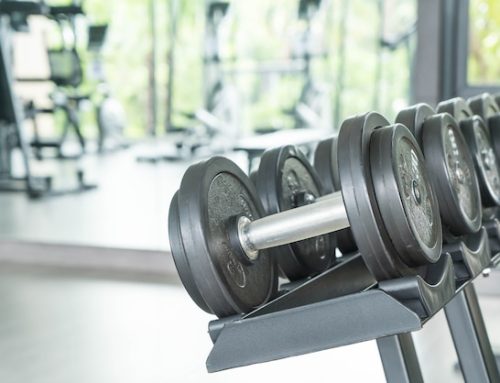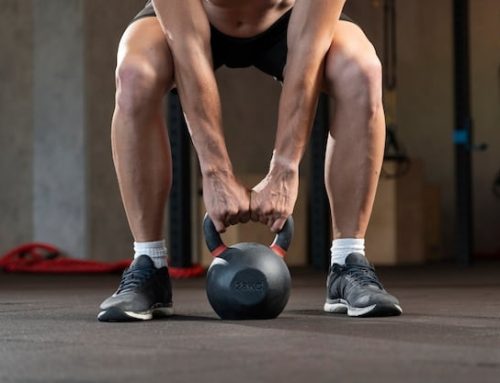Introduction
Weightlifting is one of the most popular forms of exercise worldwide. It helps to build muscle mass, burn fat, and improve overall health and fitness. Whether you are a seasoned weightlifter or just starting out, it is important to know how to tell if you are gaining muscle. In this article, we will explore some of the most effective ways to track your progress and see if your hard work is paying off.
Using a Tape Measure
One of the easiest and most reliable ways to measure muscle growth is by using a tape measure. By measuring specific areas of your body, you can track changes in muscle size over time. Some of the best areas to measure include your biceps, chest, and thighs. To accurately measure these areas, make sure to take your measurements at the same time of day and under the same conditions (e.g. before eating).
Using Body Fat Percentage
Another effective way to measure muscle growth is by tracking your body fat percentage. As you gain muscle mass, your body fat percentage should decrease. This is because muscle tissue is more metabolically active than fat tissue, meaning that it burns more calories at rest. By measuring your body fat percentage using a skinfold caliper or bioelectrical impedance machine, you can see if your muscle-building efforts are also helping you to lose fat. Calculating muscle growth involves assessing changes in muscle size or muscle mass over a certain period. Here are two common methods for estimating muscle growth:
- Body Measurements: One way to calculate muscle growth is by taking body measurements. By measuring the circumference of specific muscle groups, such as the biceps, chest, or thighs, you can track changes in muscle size. Take measurements at regular intervals, such as every two weeks or once a month, and compare them over time. An increase in circumference indicates muscle growth.
- Body Composition Analysis: Another method is to use body composition analysis techniques, such as dual-energy X-ray absorptiometry (DEXA), bioelectrical impedance analysis (BIA), or skinfold measurements. These methods estimate the amount of lean muscle mass in your body. By comparing the results before and after a training period, you can assess changes in muscle mass.
It’s important to note that muscle growth is not solely determined by size or mass. Other factors, such as strength improvements, increased endurance, and overall performance gains, are also indicators of muscle growth. Additionally, visual changes and improvements in body composition may be more noticeable than specific numerical measurements.
Using Strength Gains
Strength gains are another reliable indicator of muscle growth. As you gain muscle mass, your strength should increase as well. This is because muscle tissue is responsible for generating force and power. You can track your strength gains by recording the amount of weight you lift for various exercises (e.g. bench press, squat, deadlift). If you see an increase in the amount of weight you can lift over time, it is a good sign that you are gaining muscle.
Using Progress Pictures
Progress pictures are a great way to visually track your muscle growth over time. By taking pictures of yourself from various angles (e.g. front, back, side), you can see changes in your muscle definition and size. Make sure to take your pictures under the same lighting and conditions to get an accurate representation of your progress.
Using Performance Metrics
In addition to strength gains, there are other performance metrics that can indicate muscle growth. For example, if you are a runner, you might track your mile time or distance. If you are a gymnast, you might track your ability to perform certain skills (e.g. pull-ups, push-ups, handstands). By seeing improvements in these performance metrics, you can infer that you are gaining muscle mass.
Using the Mirror Test
While not the most scientific method, the mirror test can be a useful tool to gauge your progress. Simply look in the mirror and assess your muscle size and definition. If you are seeing more muscle mass and improved definition, it is a good indication that you are gaining muscle.
Conclusion
In conclusion, there are several ways to tell if you are gaining muscle. Whether you use a tape measure, track your body fat percentage, record strength gains, take progress pictures, monitor performance metrics, or use the mirror test, it is important to choose a method that works for you and stick to it. By tracking your progress over time, you can stay motivated and see the results of your hard work in the gym. Remember, building muscle takes time and consistency, so don’t get discouraged if you don’t see immediate results. Stick with it and you will see results in due time.
| Method | Pros | Cons |
|---|---|---|
| Tape Measure | Easy and reliable | May not account for body fat changes |
| Body Fat Percentage | Can track muscle and fat changes | Requires specialized equipment |
| Strength Gains | Indicates muscle growth and progress | Does not account for muscle definition |
| Progress Pictures | Provides visual representation of muscle changes | May not be as accurate as other methods |
| Performance Metrics | Indicates overall physical improvement | May not account for muscle size changes |
| Mirror Test | Quick and easy | Subjective and not as scientific |






